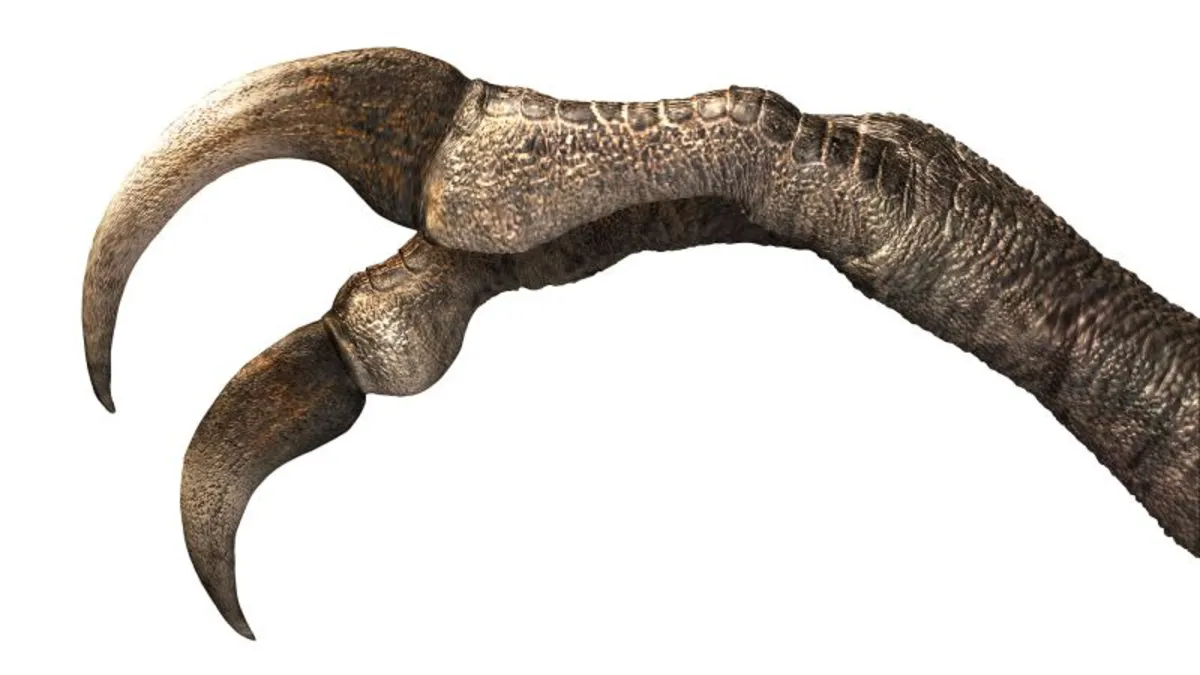
Stay informed about the universe with CNN’s Wonder Theory science newsletter. Explore fascinating discoveries, groundbreaking scientific advancements, and much more.
In an exciting discovery, paleontologists have unearthed the remains of a previously unknown species of dinosaur in Mongolia’s Gobi Desert. This remarkable find features distinctive two-fingered claws and suggests that the dinosaur had an appearance reminiscent of an unusual blend of a sloth, a giraffe, and the cult movie character Edward Scissorhands.
The fossil, which includes the intact sheath of one of the digits, is significant because it provides a rare glimpse into the keratin structure of dinosaur claws. Keratin, the same material found in human fingernails, reveals that the claw was considerably longer than the underlying bones. “It’s close to a foot in size,” explained paleontologist Darla Zelenitsky, an associate professor at the University of Calgary and coauthor of the study published in the journal iScience. “This is by far the biggest claw preserved for a dinosaur that has that keratinous sheath on it.”
The newly identified dinosaur has been named Duonychus tsogtbaatari, in honor of the esteemed Mongolian paleontologist Khishigjav Tsogtbaatar. The genus name Duonychus translates to "two claws" in Greek. This dinosaur belongs to a peculiar group known as therizinosaurs, which are part of the theropod family that includes the infamous Tyrannosaurus rex. Unlike their predatory relatives, therizinosaurs were primarily plant-eaters or omnivores.
Standing approximately 10 feet (3 meters) tall and weighing around 573 pounds (260 kilograms), Duonychus tsogtbaatari likely employed its curved claws to reach and grasp vegetation, potentially handling branches up to 4 inches (10 centimeters) in diameter. Along with the claws, paleontologists also recovered fossilized remains of the dinosaur’s backbone, tail, hips, arms, and legs, providing a comprehensive view of its anatomy.
According to Zelenitsky, the two-fingered hands of Duonychus could have served multiple purposes: they were likely used for grasping vegetation and could also have been employed in displays or as formidable weapons. “They weren’t predators, but they could defend themselves with those claws. They were big and very sharp,” she noted. The unique structure of its digits resembles the claws of a sloth, which are adapted for hanging onto tree branches.
The discovery of Duonychus tsogtbaatari has been described as “exciting” by David Hone, a paleontologist at Queen Mary University of London who was not directly involved in the research. “I’ve seen fragments from other specimens from the Gobi, but never a whole sheath like this,” Hone stated. This level of preservation is rare, as most dinosaur-bearing formations do not typically retain keratin structures.
Steve Brusatte, a professor of paleontology at the University of Edinburgh, remarked on the distinctive nature of Duonychus, noting that it has only two fingers on each of its large arms, making them resemble oversized tongs, similar to those used for barbecuing. He pointed out that while T. rex had tiny arms that were not functional for combat, therizinosaurs like Duonychus utilized their unique arm structure as an integral part of their feeding strategy.
Zelenitsky speculates that Duonychus tsogtbaatari likely had feathers, as other known therizinosaurs have been found to be feather-covered. This adds to their already odd-looking demeanor. “This is yet another example of a wonderful new dinosaur that we couldn’t have dreamed ever existed if we didn’t find its fossils,” Brusatte concluded, emphasizing the importance of this discovery in understanding dinosaur diversity.